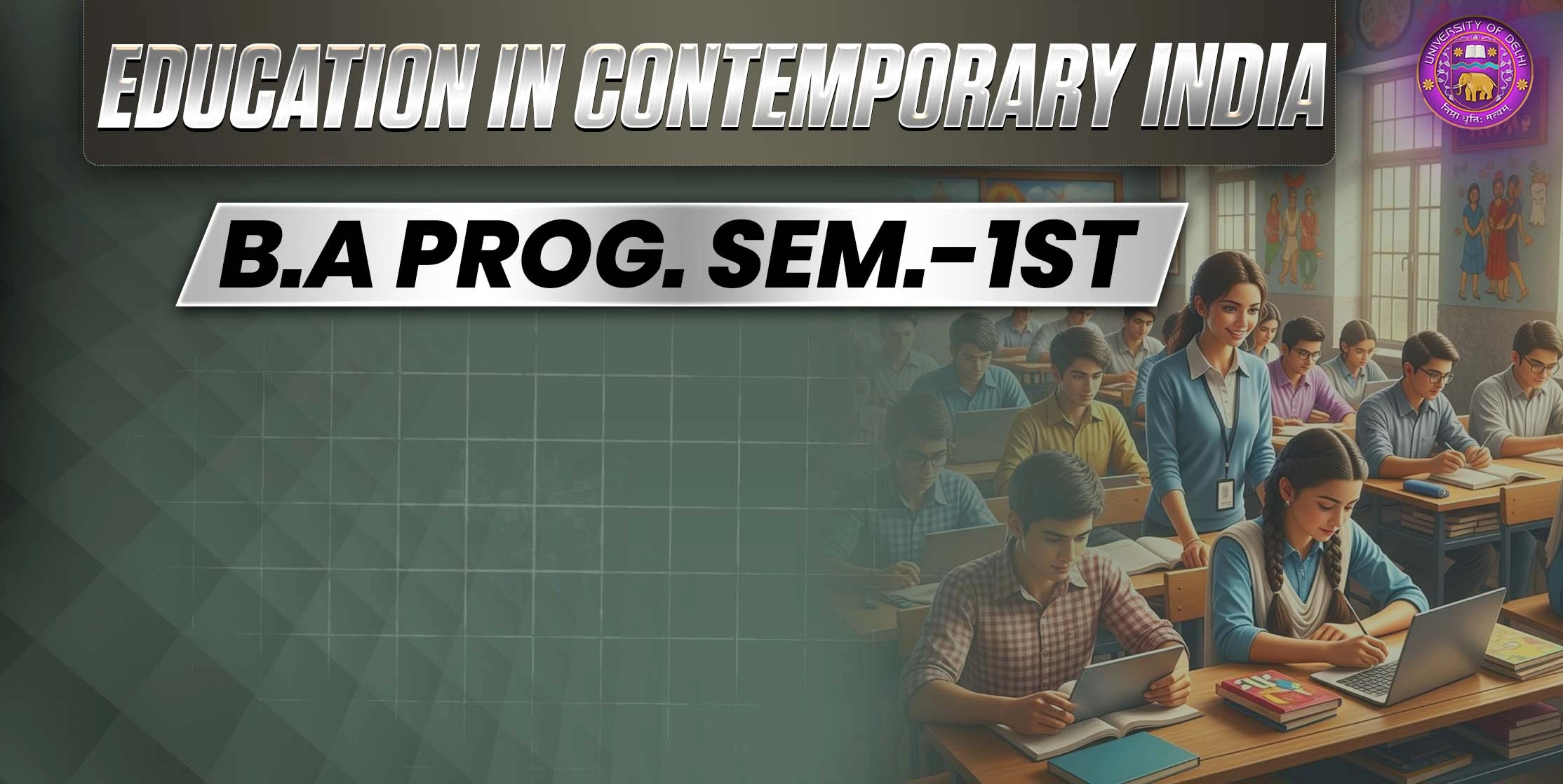Question 1. Describe the Right to Education 2009 (RTE).
Answer - Introduction
The Right to Education Act (RTE) is important legislation that marks a watershed in the education system in India. With its enactment, the right to education has become a fundamental right in the country.
Click Here For Full Notes
Right to Education Act

- The Act is completely titled “the Right of Children to Free and Compulsory Education Act”. It was passed by the Parliament in August 2009. When the Act came into force in 2010, India became one among 135 countries where education is a fundamental right of every child.
- The 86th Constitutional Amendment (2002) inserted Article 21A in the Indian
Constitution which states.
- “The State shall provide free and compulsory education to all children of 6 to 14 years in such manner as the State, may by law determine.”
- As per this, the right to education was made a fundamental right and removed from the list of Directive Principles of State Policy.
- The RTE is the consequential legislation envisaged under the 86th Amendment.
- The article incorporates the word “free” in its title. What it means is that no child (other than those admitted by his/her parents in a school not supported by the government) is liable to pay any kind of fee or charges or expenses which may
prevent him or her from pursuing and completing elementary education.
- This Act makes it obligatory on the part of the government to ensure admission, attendance and completion of elementary education by all children falling in the age bracket six to fourteen years.
- Essentially, this Act ensures free elementary education to all children in the economically weaker sections of society.
Click Here For Full Notes
RTE Provisions
The provisions of the RTE Act are briefly described below. The Act provides for:
- The right of free and compulsory education to children until they complete their elementary education in a school in the neighbourhood.
- The Act makes it clear that ‘compulsory education’ implies that it is an obligation on the part of the government to ensure the admission, attendance and completion of elementary education of children between the ages of six and fourteen. The word ‘free’ indicates that no charge is payable by the child which may prevent him/her from completing such education.
- The Act provides for the admission of a non-admitted child to a class of his/her appropriate age.
- It mentions the duties of the respective governments, the local authorities and parents in ensuring the education of a child. It also specifies the sharing of the financial burden between the central and the state governments.
- It specifies standards and norms for Pupil Teacher Ratios (PTR), infrastructure and buildings, working days of the school and for the teachers.
- It also says there should be no urban-rural imbalance in teacher postings. The Act also provides for the prohibition of the employment of teachers for noneducational work, other than census, elections and disaster relief work.
- The Act provides that the teachers appointed should be appropriately trained and qualified.
The Act prohibits
- Mental harassment and physical punishment.
- Screening procedures for the admission of children.
- Capitation fees.
- Private tuition by the teachers.
- Running schools with no recognition.
- The Act envisages that the curriculum should be developed in coherence with the values enshrined in the Indian Constitution, and that which would take care of the all-round development of the child. The curriculum should build on the knowledge of the child, on his/her potentiality and talents, help make the child free of trauma, fear and anxiety via a system that is both child-centric and child-friendly.
Criticism of RTE Act
Even though the RTE Act is a step in the right direction towards the achievement of making education truly free and compulsory in India, it has met with several criticisms.
Some of the criticisms are given below:
- The Act was drafted hastily without much thought or consultation being given to
the quality of education imparted.
- Children below 6 years are not covered under the Act.
- Many of the schemes under the Act have been compared to the previous schemes on education such as the Sarva Shiksha Abhiyan, and have been plagued with corruption charges and inefficiency.
- At the time of admissions, many documents such as birth certificate, BPL certificate, etc. are required. This move seems to have left out orphans from being beneficiaries of the Act.
- There have been implementational hurdles in the 25% reservation of seats for news and others in private schools. Some of the challenges in this regard are discriminatory behaviour towards parents and difficulties experienced bystudents
to fit in with a different socio-cultural milieu.
Conclusion
Making the right to education a fundamental right took more than 6 decades after independence. Now, the government and all stakeholders should focus on the quality of education and gradually move towards having a single educational system and platform across the country for all sections of society in order to foster equality, inclusion and unity.
Click Here For Full Notes


